Saludos, amigos lectores y comunidad @mundo.autismo.
En el siguiente enlace pueden revisar, si gustan, la I Parte de esta publicación. Hoy les traigo la II Parte, Mi experiencia psicopedagógica con la aplicación del Programa de Entrenamiento Cognitivo para Niños Pequeños, de María Consuelo Saiz y José Marcano Román, recurso educativo basado en las teorías sobre el control ejecutivo, fundamentalmente los factores de inhibición para mejorar los niveles atencionales. Describiré su aplicación en niños con trastorno del espectro autista.
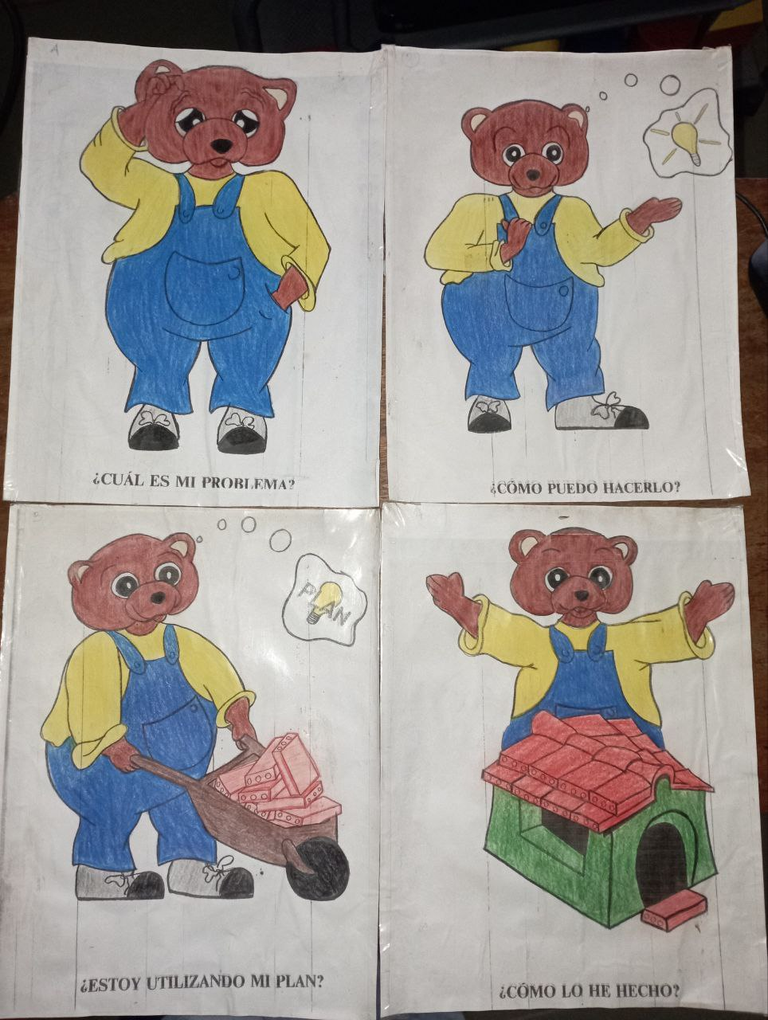
Estas son imágenes del Programa de Entrenamiento Cognitivo. En ellas se visualizan las (auto)instrucciones que el niño debe aprender para guiar el inicio, proceso y término de sus actividades.

¿En qué se basan las terapias cognitivas?
La estimulación cognitiva (EC) se refiere al conjunto de técnicas y estrategias orientadas a mejorar el rendimiento y la eficacia de capacidades y funciones ejecutivas como la memoria, atención, lenguaje, razonamiento o la planificación, entre otras. La estimulación genera cambios en la plasticidad cerebral, entendida esta como la capacidad del sistema nervioso para modificar su estructura y su funcionamiento como reacción y adaptación a la diversidad del entorno.
¿Técnicas y programas de estimulación cognitiva?
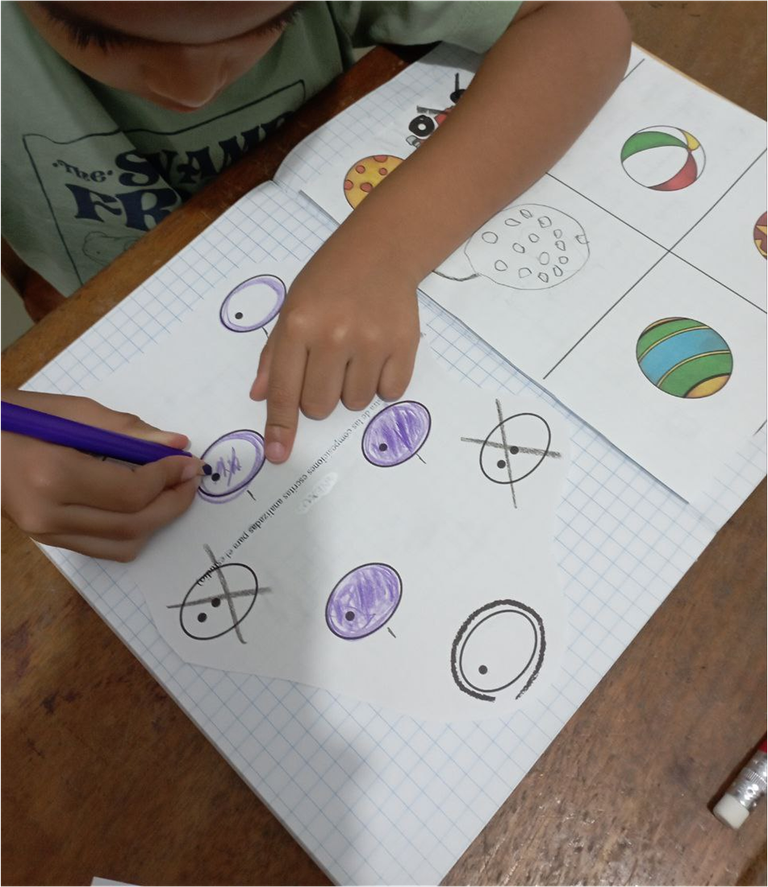
Aplicación de una actividad del Programa de Entrenamiento Cognitivo.

A través de la estimulación cognitiva se puede ayudar al niño a mejorar el funcionamiento ejecutivo, por medio de actividades atractivas y amigables mediadas por técnicas de aplicación muy específicas que buscan optimizar las competencias de inhibición de respuestas, atención, memoria, concentración y, en general el razonamiento y control sobre las tareas.
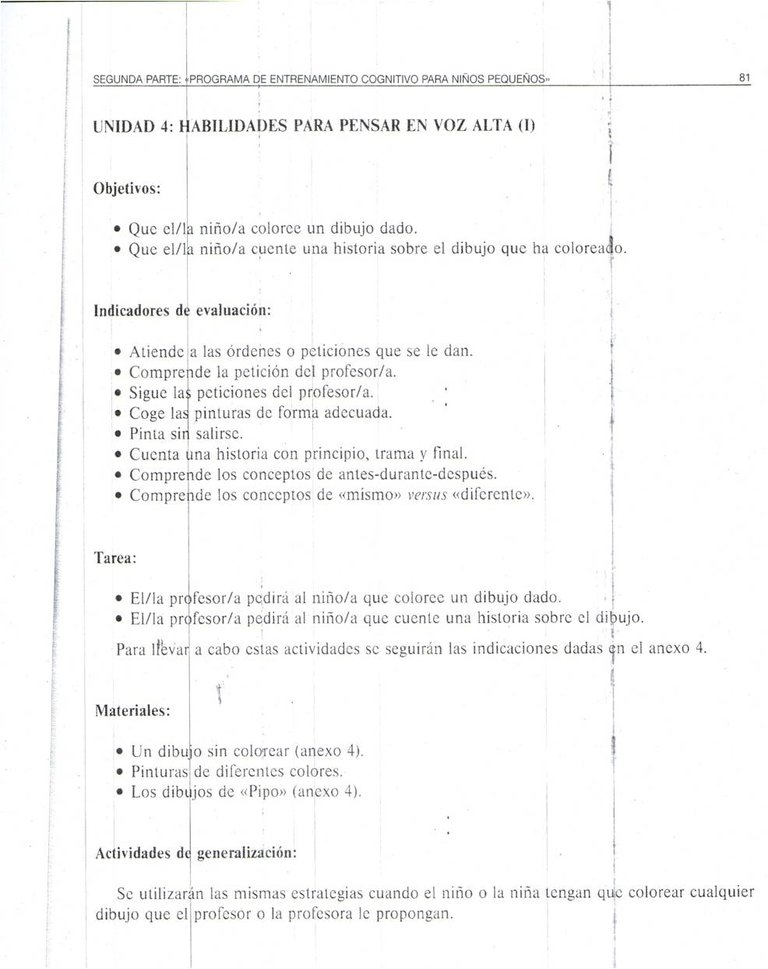
En esta página podemos observar parte de la planificación de las actividades del Programa de Entrenamiento Cognitivo.

Por tal motivo, la estimulación cognitiva juega un papel protagónico en el desarrollo del niño, imprimiendo al rendimiento de sus funciones intelectuales un plus, inclusive si éstas están alteradas por una condición del desarrollo, como autismo o déficit de atención, por ejemplo. Como se expone en el siguiente breve resumen del texto, donde intencionalmente lo que hecho sobresalir, colocando el texto en negritas.
Programa de Entrenamiento Cognitivo para Niños Pequeños, de María Consuelo Saiz y José Marcano Román.
Sinopsis
En las últimas décadas la ciencia cognitiva se ha interesado por conocer de forma científica el desarrollo de la mente, su manera de procesar información, el cómo resuelve problemas... El Programa de Entrenamiento Cognitivo para niños pequeños, propone una metodología nueva dentro de la aplicación cognitiva en el campo educativo. El "Programa de Entrenamiento Cognitivo para Niños Pequeños" quiere facilitar esta tarea. Ha sido aplicado a niñas y niños de Educación Infantil y de Educación Primaria…La gradación de las unidades de trabajo en niveles progresivos de dificultad permite su empleo también con aquellos alumnos que presenten necesidades educativas especiales por discapacidad, deprivación o sobredotación.
Me parece importante que los autores hayan incluido la necesidad de la población que necesita de estos recursos psicoeducativos; además, personalmente me transmiten confianza para su aplicación en niños con trastorno del espectro autista y/o con déficit de atención, que ha sido mi población objeto con este programa.

Actividades sobre los cinco sentidos, del Programa de Entrenamiento Cognitivo.

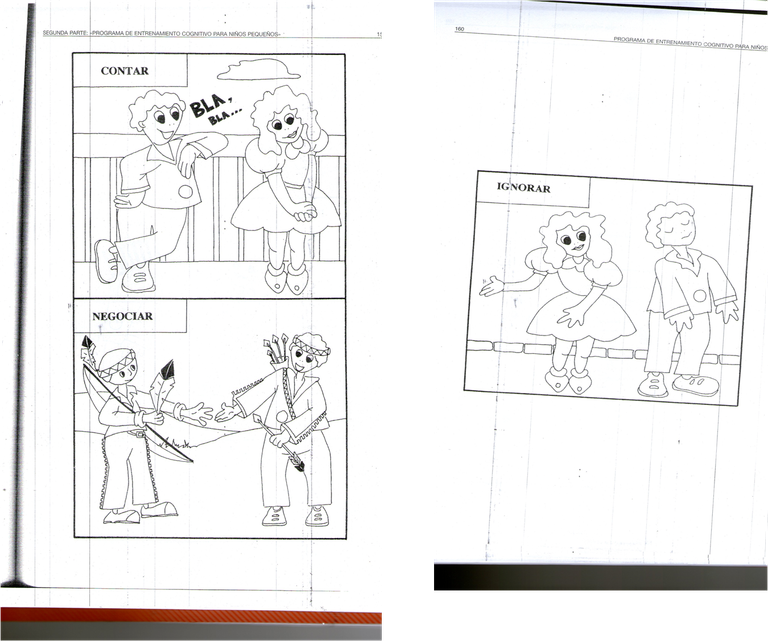
Estas son actividades del Programa de Entrenamiento Cognitivo.

El Programa de Entrenamiento Cognitivo, plantea una serie de actividades para ser mediadas bajo estricta vigilancia, en un entorno muy técnico, cuidando que el niño realice la tarea en forma consciente, colocando su atención en cada paso. Por medio de (auto)instrucciones, primero por parte del psicopedagogo, que luego el niño imita y se apropia de ellas. Estas verbalizaciones primero se emiten en voz alta, llamadas instrucciones manifiestas; luego por medio de actitudes: expresiones, señalizaciones e indicadores físicos, llamadas instrucciones encubiertas (pensamiento)
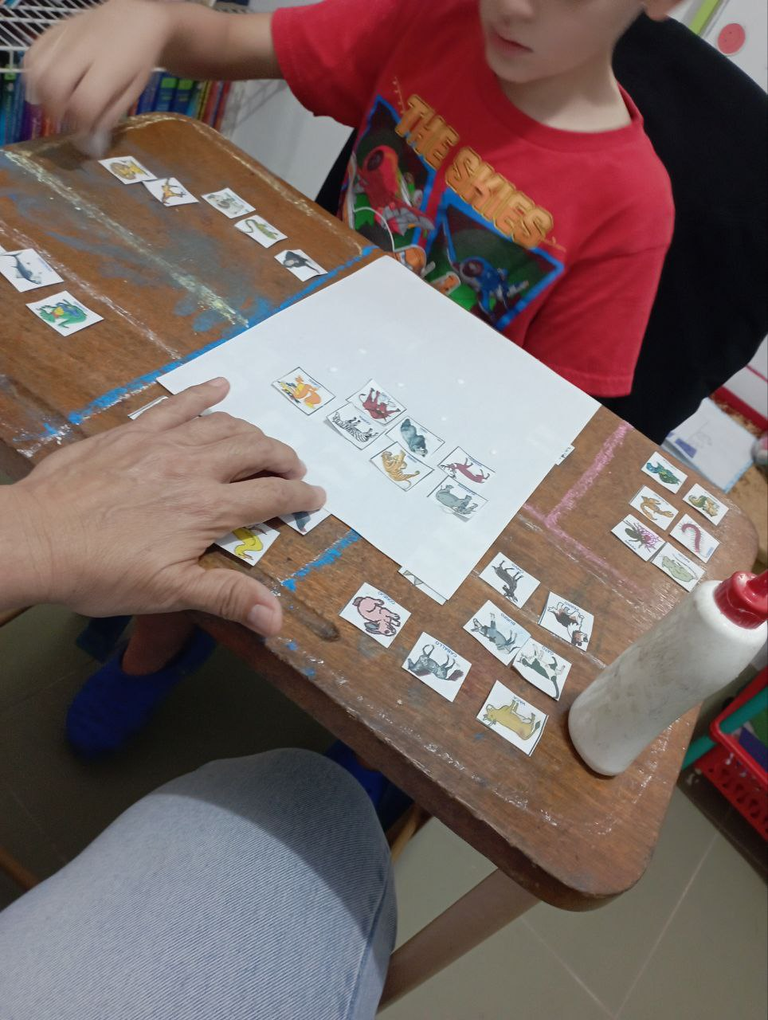
Actividad del Programa de Entrenamiento Cognitivo. Utilizo la tiza de color para afianzar las instrucciones.

El contenido de estas (auto)instrucciones están dirigidas a modificar el pensamiento a través de la elaboración de planes que guían el abordaje de la tarea desde su inicio hasta su finalización. Una vez que el niño se apropia de ellas, el psicopedagogo, monitorea en todo momento la actividad cuidando el orden de ejecución para que ninguno de los pasos planificados quede excluido o modificado del plan inicial que se verbalizó. Al final, se realiza una valoración de la actividad, donde se evalúan y autoevalúan los aciertos y errores. Finalmente se llena la ficha de auto registro de la sesión, donde se pueden manejar reforzadores previamente planificados.
Este Programa de Entrenamiento Cognitivo, es muy amigable, de fácil comprensión y aplicación. No por ello es menos exigente en referencia al apego a su metodología. De hecho, en el tiempo que tengo aplicándolo, he tenido excelentes resultados, siempre sujeta a la planificación y organización que se exige. Sin embargo, cuando se conoce la teoría y se tiene acumulada una experiencia, es posible la introducción cuidadosa de pequeñas variaciones, propias del conocimiento adquirido y el apego a los marcos de referencia, sobre todo lo he hecho en la selección de las actividades, para aumentar la curiosidad y motivación del niño.

Ejemplo de actividades del Programa de Entrenamiento Cognitivo.

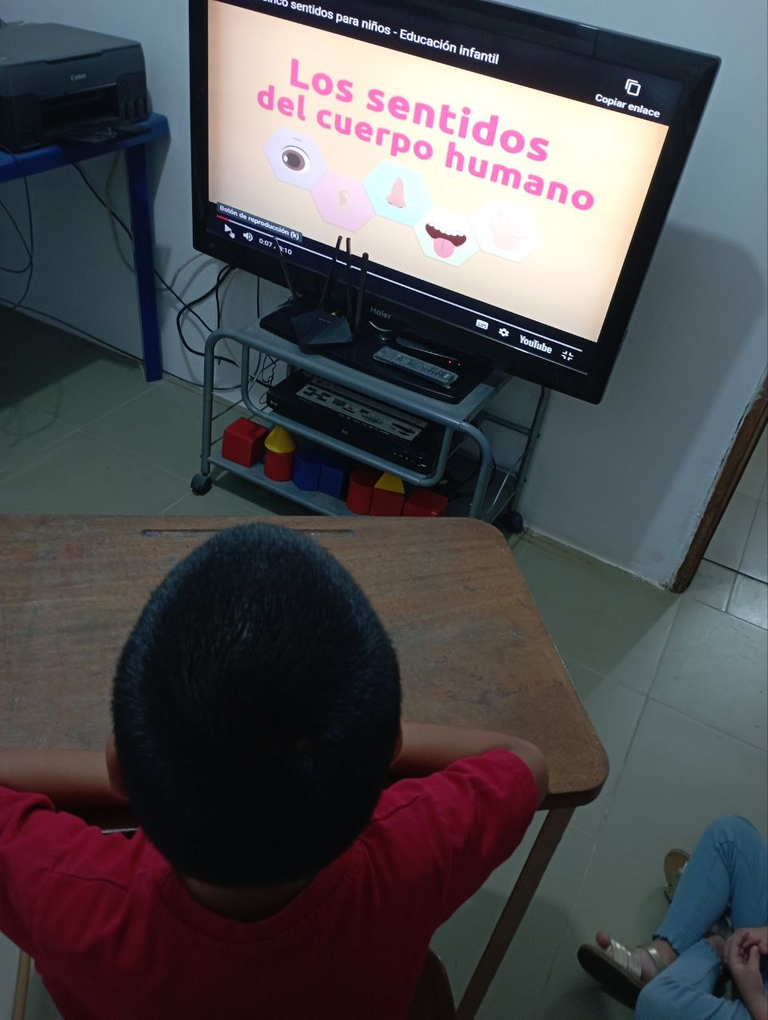
Video sobre Los Cinco Sentidos, como parte de una actividad del programa.

Este Programa es un recurso que sus autores han construido con base en investigaciones sobre el funcionamiento ejecutivo, ya mencionados en la primera parte de este tema, donde la inhibición es base principal para el control consciente de la atención dirigida y sostenida. De esta forma, se proponen pasos que hay que realizar en forma consistente antes de cada una de las actividades, (auto)instrucciones, las cuales guían y orientan la elaboración de las actividades, desde el principio hasta el final. Básicamente es la integración de los principios de la terapia cognitiva y la teoría sobre el funcionamiento ejecutivo para mejorar los niveles de inhibición de factores distractores tanto del ambiente como del propio pensamiento del niño.
En la web se pueden encontrar diversidad de materiales para imprimir que promocionan, y demás, garantizan su eficiencia en la regulación de la atención. Sin embargo, estos materiales por sí solos no tendrán el efecto prometido si no están organizados e integrados con base en un soporte metodológico que garantice su efectividad y la modificación ejecutiva a la cual hacen eco.
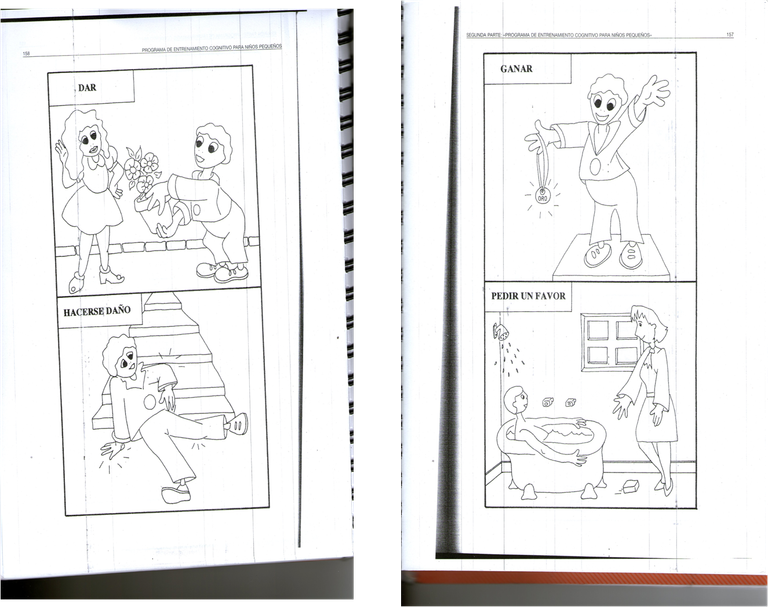
Actividades del Programa de Entrenamiento Cognitivo.

En este sentido, es muy importante que sea del conocimiento general que el Programa de Entrenamiento Cognitivo está soportado en las teorías expuestas; además, su basamento en evidencias, pone de manifiesto la necesidad de integrar metodológicamente las actividades con un cuerpo de pasos que ayudan al niño a observar, planificar, organizar y seguir en forma progresiva y sistemática pasos para llevar a feliz término sus actividades. Garantizando de esta manera el control inhibitorio sobre los estímulos distractores.
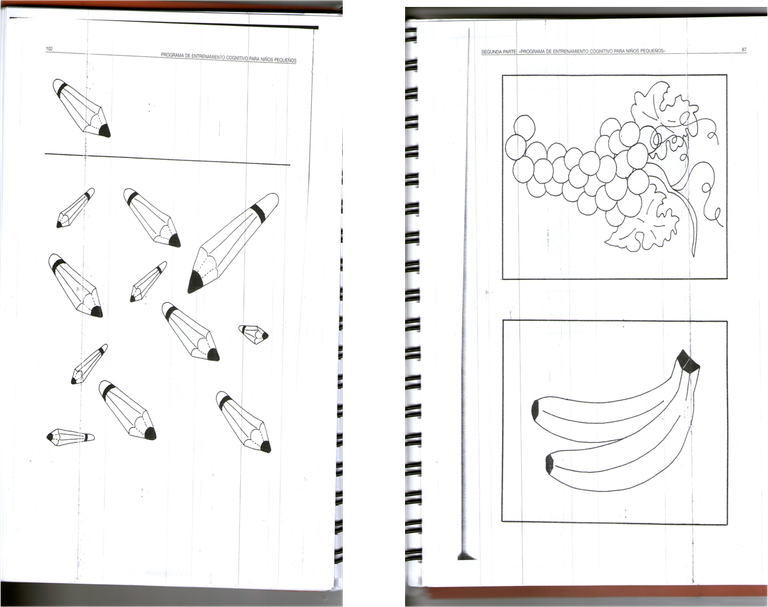
Actividades del Programa de Entrenamiento Cognitivo..

Apoyo con otros materiales y recursos.
Con el paso del tiempo, la experiencia y los resultados positivos que he obtenido con la aplicación del Programa de Entrenamiento Cognitivo, he revisado estos textos y extraído algunas actividades para aplicarlas, como enfaticé, siempre enmarcadas en los fundamentos metodológicos del Programa de Entrenamiento para Niños Pequeños.
Estos son recursos basados en actividades de estimulación cognitiva. Lo que hago es tomar las que, previo análisis, pueden apoyar mis objetivos y las medio a través de la metodología propuesta por el Programa de Entrenamiento Cognitivo.

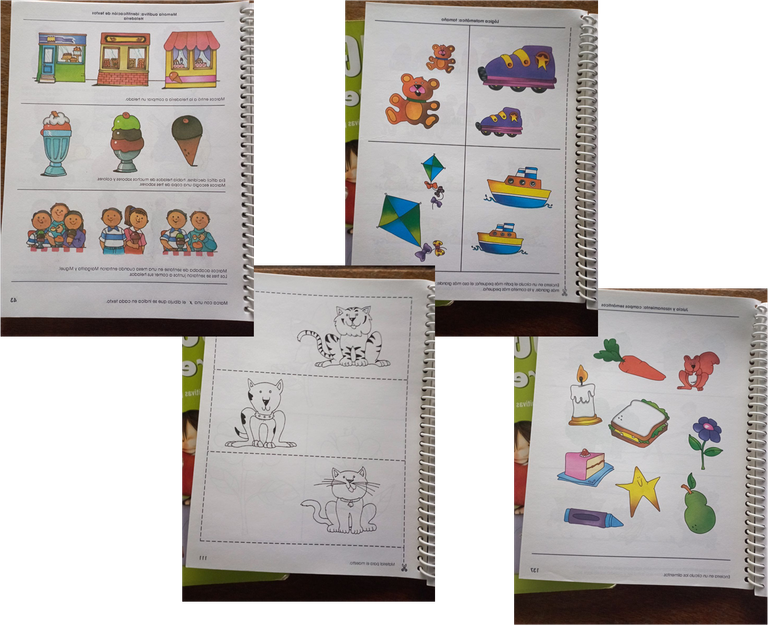


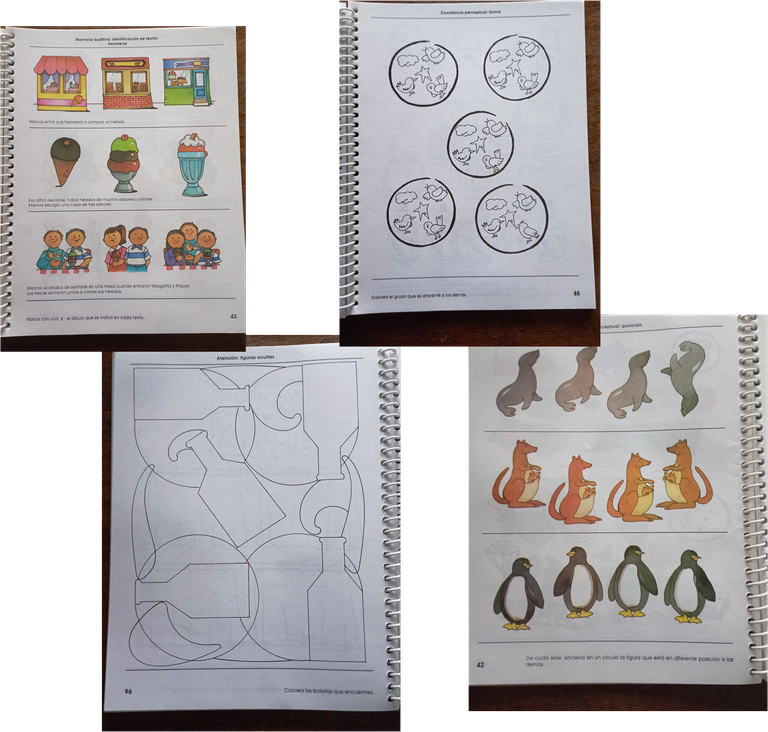

Cierro este interesante tema con el siguiente comentario: cuando empleamos recursos educativos, como los descritos, que están elaborados previamente, es importante que aprendamos y manejemos sus basamentos teóricos y prácticos, que nos documentemos sobre sus autores y tratemos de comprender la dinámica de sus objetivos. De esta forma, podremos flexibilizar nuestra visión (aplicación) sin perder de vista las directrices que gobiernan y sustentan la didáctica y metodología de los materiales presentados. Así, podemos imprimir cambios, enriqueciendo e inclusive proponiendo modificaciones que resulten más efectivas. Son principios de innovación e investigación que acompaña a la profesión docente.
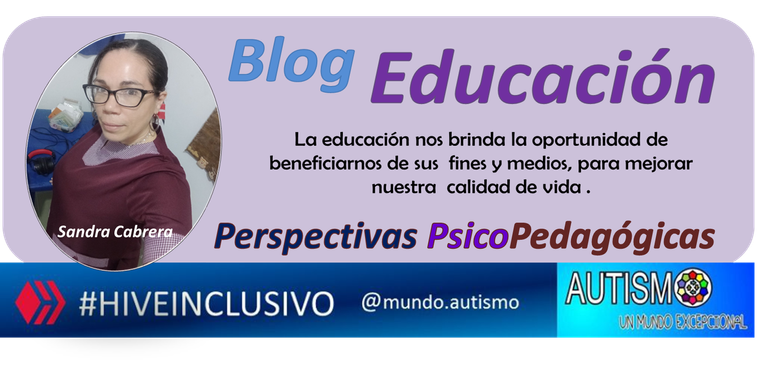
Soy Sandra Cabrera, licenciada en Dificultades para el Aprendizaje, con estudios de postgrado en Educación Especial Integral, Planificación Educativa y Literatura Infantil. Si te interesan los temas sobre educación especial, la discapacidad y las condiciones especiales del desarrollo, puedes contactarme a través de los números 04128032993 y 0412 8333334 y en:
El canal de Telegram, Trastornos del Aprendizaje.
En las redes sociales Instagram y Facebook1 y Facebook2. Sandra Cabrera Psicopedagoga.
En la cuenta de spreaker, @sandracabrerapodcast.

Todas las imágenes han sido tomadas con mi teléfono Redmi11.
La traducción la he realizado con Google.
Greetings, fellow readers and @mundo.autismo community.
If you like, you can check out Part I in the following link. Today I bring you Part II, My psychopedagogical experience with the application of the Cognitive Training Program for Young Children, by María Consuelo Saiz and José Marcano Román, an educational resource based on theories about executive control, fundamentally the inhibition factors to improve attention levels. I will describe its application in children with autism spectrum disorder.
 These are images from the Cognitive Training Program. They display the (self)instructions that the child must learn to guide the start, process and end of their activities.
These are images from the Cognitive Training Program. They display the (self)instructions that the child must learn to guide the start, process and end of their activities.

What are cognitive therapies based on?
Cognitive stimulation (CS) refers to the set of techniques and strategies aimed at improving the performance and effectiveness of executive capacities and functions such as memory, attention, language, reasoning or planning, among others. Stimulation generates changes in brain plasticity, understood as the capacity of the nervous system to modify its structure and its functioning as a reaction and adaptation to the diversity of the environment.
Cognitive stimulation techniques and programs?

Application of an activity from the Training Program Cognitive.

Through cognitive stimulation, children can be helped to improve their executive functioning through engaging and friendly activities mediated by very specific application techniques that seek to optimize the skills of response inhibition, attention, memory, concentration and, in general, reasoning and control over tasks.

On this page we can see part of the planning of the activities of the Cognitive Training Program.

For this reason, cognitive stimulation plays a leading role in the development of the child, printing on the performance of their Intellectual functions are a plus, even if they are altered by a developmental condition, such as autism or attention deficit, for example. As is set out in the following brief summary of the text, where I have intentionally made it stand out by placing the text in bold.
Cognitive Training Program for Young Children, by María Consuelo Saiz and José Marcano Román.
Synopsis
In recent decades, cognitive science has been interested in scientifically understanding the development of the mind, its way of processing information, how it solves problems... The Cognitive Training Program for Young Children proposes a new methodology within the cognitive application in the educational field. The "Cognitive Training Program for Young Children" aims to facilitate this task. It has been applied to girls and boys in Early Childhood Education and Primary Education…The gradation of the work units in progressive levels of difficulty allows its use also with those students who present special educational needs due to disability, deprivation or giftedness.
I think it is important that the authors have included the needs of the population that needs these psychoeducational resources; furthermore, they personally inspire confidence in their application in children with autism spectrum disorder and/or with attention deficit, which has been my target population with this program.

Activities on the five senses, from the Training Program Cognitive. #


_These are Training Program activities Cognitive.

The Cognitive Training Program proposes a series of activities to be mediated under strict supervision, in a very technical environment, ensuring that the child performs the task consciously, placing his attention on each step. Through (self)instructions, first by the psychopedagogue, which the child then imitates and appropriates. These verbalizations are first issued aloud, called manifest instructions; then through attitudes: expressions, signals and physical indicators, called covert instructions (thought)

Cognitive Training Program Activity. I use colored chalk to reinforce the instructions.

The content of these (self)instructions is aimed at modifying thinking through the development of plans that guide the approach to the task from its beginning to its completion. Once the child takes ownership of them, the psychopedagogue monitors the activity at all times, taking care of the order of execution so that none of the planned steps are excluded or modified from the initial plan that was verbalized. At the end, an evaluation of the activity is carried out, where the successes and errors are evaluated and self-evaluated. Finally, the session self-registration form is filled out, where previously planned reinforcers can be managed.
This Cognitive Training Program is very user-friendly, easy to understand and apply. It is no less demanding in terms of adherence to its methodology. In fact, in the time I have been applying it, I have had excellent results, always subject to the planning and organization required. However, when the theory is known and experience has been accumulated, it is possible to carefully introduce small variations, typical of the acquired knowledge and adherence to the reference frameworks, especially in the selection of activities, to increase the child's curiosity and motivation.

Example of Training Program activities Cognitive.


Video about The Five Senses, as part of an activity of the program.

This Program is a resource that its authors have built based on research on executive functioning, already mentioned in the first part of this topic, where inhibition is the main basis for conscious control of directed and sustained attention. In this way, steps are proposed that must be carried out consistently before each of the activities, (self)instructions, which guide and direct the elaboration of the activities, from beginning to end. Basically, it is the integration of the principles of cognitive therapy and the theory on executive functioning to improve the levels of inhibition of distracting factors both from the environment and from the child's own thinking.
On the web you can find a variety of printable materials that promote and guarantee their efficiency in regulating attention. However, these materials alone will not have the promised effect if they are not organized and integrated based on a methodological support that guarantees their effectiveness and the executive modification they echo.
On the web, you can find a variety of printable materials that promote and guarantee their efficiency in regulating attention. However, these materials alone will not have the promised effect if they are not organized and integrated based on a methodological support that guarantees their effectiveness and the executive modification they echo.

Cognitive Training Program Activities.

In this sense, it is very important that it is generally known that the Cognitive Training Program is supported by the theories set forth; Furthermore, its evidence-based approach highlights the need to methodologically integrate activities with a set of steps that help children observe, plan, organize and follow steps progressively and systematically to successfully complete their activities, thereby ensuring inhibitory control over distracting stimuli. #

Activities of the Cognitive Training Program..

Support with other materials and resources.
Over time, the experience and positive results I have obtained with the application of the Cognitive Training Program Cognitive Training, I have reviewed these texts and extracted some activities to apply them, as I emphasized, always framed in the methodological foundations of the Training Program for Young Children.
These are resources based on cognitive stimulation activities. What I do is take those that, after analysis, can support my objectives and I measure them through the methodology proposed by the Cognitive Training Program.

 #  #
 # 
# 

I will close this interesting topic with the following comment: when we use educational resources, such as those described, which are previously prepared, it is important that we learn and handle their theoretical and practical foundations, that we document ourselves on their authors and try to understand the dynamics of their objectives. In this way, we can make our vision (application) more flexible without losing sight of the guidelines that govern and support the teaching and methodology of the materials presented. Thus, we can make changes, enriching and even proposing modifications that are more effective. These are principles of innovation and research that accompany the teaching profession.

I am Sandra Cabrera, a graduate in Learning Disabilities, with postgraduate studies in Comprehensive Special Education, Educational Planning and Children's Literature. If you are interested in topics related to special education, disability and special developmental conditions, you can contact me at 04128032993 and 0412 8333334 and at:
The Telegram channel, Learning Disorders.
On social media Instagram and Facebook1 and Facebook2. Sandra Cabrera Psychopedagogue.
On the spreaker account, @sandracabrerapodcast.

All images were taken with my Redmi11 phone.
The translation was done with Google.
¡Excelente artículo!
Muchas gracias, @sandracabrera
Saludos @sandracabrera 💙
Encantadora publicación, realmente muy completa explicación sobre actividades de estimulación cognitiva y con un excelente soporte visual, gracias a las fotos.
¡Bienvenidas las Delegaciones / Welcome Delegations
Trail de Curación / Curation Trail
Muy buenos días.
Gracias, @mundo.autismo
Siempre a la orden.
Saludos y buenos días.
¡Enhorabuena!
✅ Has hecho un buen trabajo, por lo cual tu publicación ha sido valorada y ha recibido el apoyo de parte de CHESS BROTHERS ♔ 💪
♟ Te invitamos a usar nuestra etiqueta #chessbrothers y a que aprendas más sobre nosotros.
♟♟ También puedes contactarnos en nuestro servidor de Discord y promocionar allí tus publicaciones.
♟♟♟ Considera unirte a nuestro trail de curación para que trabajemos en equipo y recibas recompensas automáticamente.
♞♟ Echa un vistazo a nuestra cuenta @chessbrotherspro para que te informes sobre el proceso de curación llevado a diario por nuestro equipo.
🥇 Si quieres obtener ganancias con tu delegacion de HP y apoyar a nuestro proyecto, te invitamos a unirte al plan Master Investor. Aquí puedes aprender cómo hacerlo.
Cordialmente
El equipo de CHESS BROTHERS
@tipu curate 8
Upvoted 👌 (Mana: 0/63) Liquid rewards.
Excelente propuesta muy bien respaldada.
Es una manera eficaz de obtener resultados óptimos, sin que sea tortuoso.
Muy agradecida!